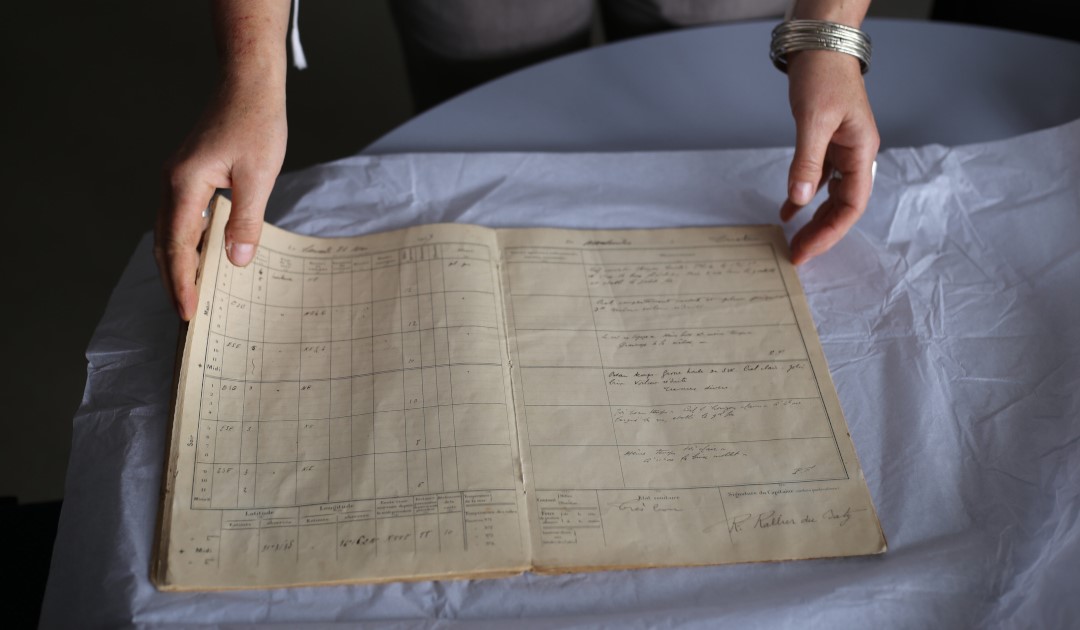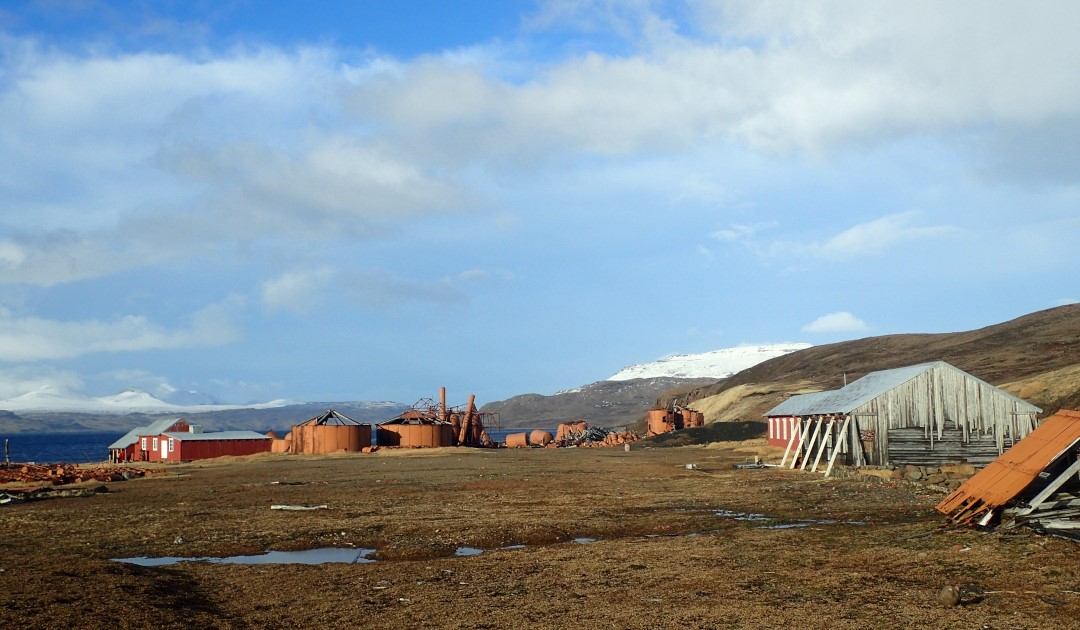
A new strategy at the prefecture of the Southern and Antarctic French Territories (TAAF) continues a promising dynamic for France’s polar heritage, which is growing with new objects and documents.
The exhibition “Voyage en terres australes Crozet et Kerguelen 1772-2022“, at the National Maritime Museum in Brest, was just the beginning. The French organisation Terres Australes et Antarctiques Française (TAFF) has recently formulated and validated a strategy for the management of its historical heritage.
This measure follows an inventory phase – which has not yet been completed – initiated by the French Polar Institute in 2015 and then by the TAAF in 2018. A significant number of historical documents and objects have been rediscovered in storage locations or in the field.


At the French Polar Institute, a collection of photographic negatives and developed images is being archived. They are being digitalized and uploaded to the Archives Polaires Archipole website for consultation by scientists and the general public.

In addition, there are private collections, such as the Jean Corbel collection – a CNRS scientist – which his widow wanted to part with. “We don’t have a lot of space, but we do what we can to keep it from being thrown away,” explains Aude Sonneville, head of communications at the French Polar Institute, as she opens a passage between the shelves of the library, which is supported by rails and holds a wealth of letters, images and film reels.
As the inventories take shape, the images are sent to the Bibliothèque nationale de France, the videos to the Cinémathèque de Bretagne and the scientific measuring tools to the Centre national des arts et métiers in Paris.

While the French Polar Institute is tidying up, the TAAF are redefining the legal basis for conducting searches. “Searches are now subject to precise inventories, so whatever comes out is classified and put into collections,” explains Laetitia Therond, head of heritage missions. The first heritage missions only began in 1993, under a 1956 law. Objects are not subject to the legislation governing museums in France, which prevents them from being sold or taken out of the collection.
When Laetitia Therond started working at the TAAF in 2018, she began compiling inventories of archaeological sites and historical objects. This has helped her to define conservation priorities and work issues.


The former farm at Port-Couvreux, where three couples with children tried to settle, is emblematic of an era. “A scythe may seem trivial, but in the context of Kerguelen, it tells the story of the attempt to colonise the island and the introduction of animals and plant species through fodder,” she says. Contemporary history is also important, and we’re working on hut journals and mission boards. It’s not our role to favour one theme over another. We need to preserve the memory of everything, but we are working a bit more on the remains of the sealers’ era, because there are only few traces of them.”
At the French Polar Institute, the policy is different, with archivists working on their own history, including the construction of the Dumont D’Urville station. It’s also a way of learning a little more so that we can rebuild it in the future,” explains Aude Sonneville. Archives are essential to avoid history being rewritten on the basis of interpretation, and with digital technology it’s true that we’re losing a bit of our awareness of objects.”
Laetitia Thérond agrees: “Preserving the memory of all these stages helps us to understand what happened with specific material. When you have the objects in front of you, you can realise the difficulties that the victims of the shipwrecks had to face, and sometimes the stories are kept discreet. It’s the object that creates the emotion, and it’s more moving to have the real witness to the adventure.”

As for the inventory, it will continue, and the Department of Underwater Archaeological Research will set up a survey to complete the terrestrial heritage map.
Camille Lin, PolarJournal
Featured image by William Boffy
Learn more about this topic:





